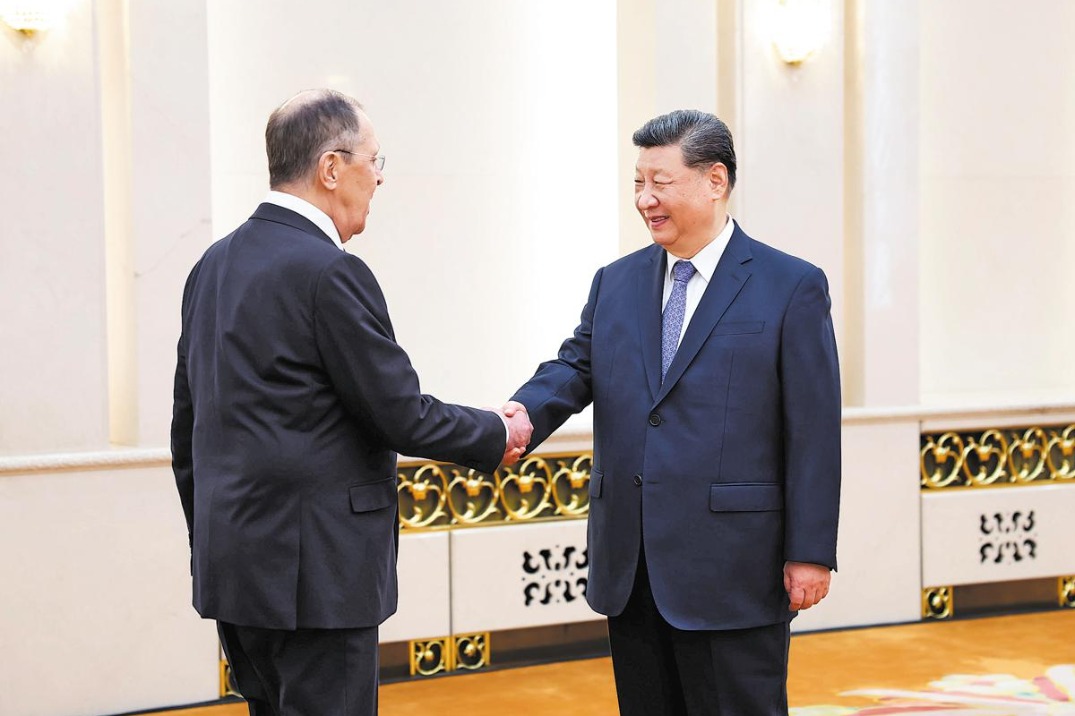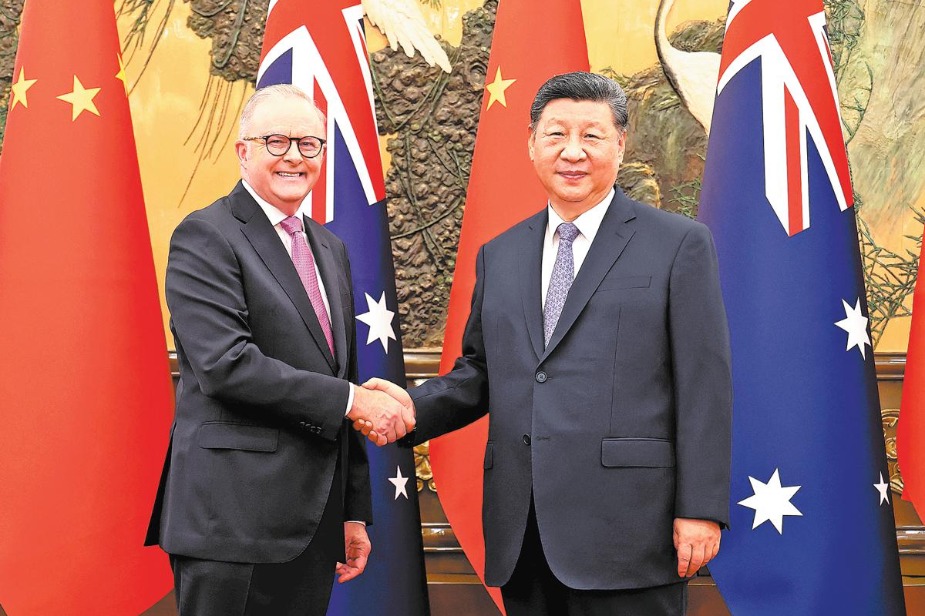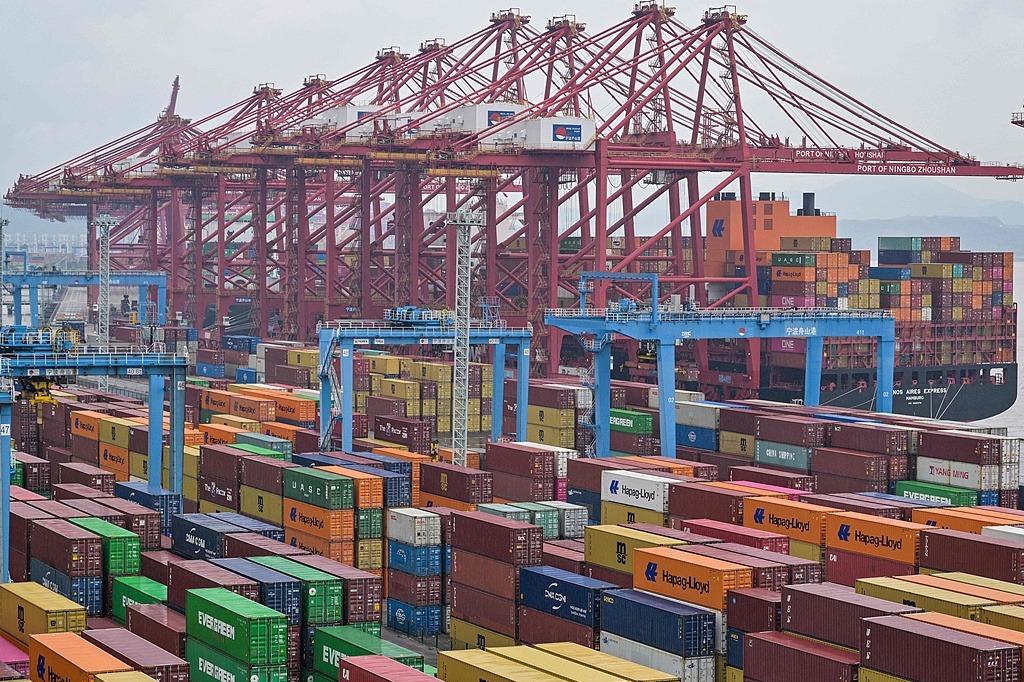Green synergy
Cooperation on accelerating the global net-zero carbon transition can help promote better China-US ties


Four months after former US president Richard Nixon's historic 1972 visit to China, the United Nations Conference on the Human Environment was held in Stockholm, marking the emergence of environment issues in the China-US cooperation agenda. China and the United States sent delegations to the conference and worked together for the Declaration on the Human Environment, or Stockholm Declaration for "Only One Earth". Now global climate change governance has entered the post-Glasgow era following the 26th Conference of the Parties of the United Nations Framework Convention on Climate Change, and China and the US can work together to lead the transition to a carbon-neutral world.
China and the US are key participants in global climate governance and the drivers of the global energy transition. To peak its carbon emissions before 2030 and achieve carbon neutrality before 2060, China has formulated a top-level design and is accelerating institutional planning to promote green, lowcarbon development and the energy transition, which will strictly control coal-fired power projects while promoting the high-quality development of wind power and photovoltaic power generation. In recent years, China has become a world leader in the supply of clean technology, and has been working to build a new global supply chain dominated by renewable energy. In the US, the Joe Biden administration has proposed a Green New Deal to address the climate crisis, promote economic growth and eliminate domestic economic inequality. It has pledged to reduce greenhouse gas emissions by 50-52 percent by 2030 compared to 2005, and achieve carbon-free pollution and net-zero emissions in the electric power industry by 2035 and a net-zero economy by no later than 2050 in the medium term. Climate change is placed at the center of domestic economic transformation and foreign policy planning, and great importance has been attached to the R&D and application of net-zero carbon technologies to safeguard US leadership in the direction and concept of key decarbonization technological advancement.
As for China-US cooperation, there are still many chronic problems, including the geopolitical competition between them and a lack of political mutual trust. The bipartisan consensus in the US on strategic competition hinders the Biden administration from working better with China on climate and energy governance. Some US politicians increasingly see China and other emerging powers as strategic competitors, and climate governance a matter of US economic dominance, energy security and technological leadership. This beggar-thy-neighbor competitive approach will not only undermine mutual trust between the developed and developing countries, but also distort the global distribution of clean energy and green industry chains, and hinder international cooperation in clean technology research and development. In turn, it will increase the economic cost of the green transition, widen the gap between major countries and developing countries, and present unprecedented challenges for global climate governance and the realization of the low-carbon transition.
Looking into the future, in order to cope with the emerging "coopetition" between China and the US in the realm of climate change, pragmatic tools should be used to lead the overall China-US climate collaboration.
First, leaders from both sides have achieved successful climate cooperation previously, taking constructive leadership for the adopting, signing and bringing into force of the Paris Agreement. China and the US should reinforce their headof-state diplomacy to facilitate coordination at multilateral venues. Facilitating China-US low-carbon intellectual property and technology cooperation mechanisms would foster a good institutional environment for promoting bilateral trust.
Second, China and the US can coexist, co-prosper and be competitively collaborative in the realm of high technology. As technological cooperation is the guaranteed path to tackle the climate crisis, shared understandings among scientists need to be the keystone for bilateral exchanges in science and technology. Current technologies in emissions reduction and carbon neutrality are still in an early development stage, with high costs and considerable difficulties in realizing the transformational restructuring of energy industry. Negative emissions, meaning low-carbon, zerocarbon and negative-carbon technologies, are the key to a country's climate governance, but disparities in high-tech capacities still exist between China and the US, even with shared understandings on the issue of climate change, and common aspirations to exchange experiences in equipment manufacturing and academic findings. China and the US can jointly establish a high-level dialogue mechanism for climate change and energy transformation, opening new rounds of China-US Joint Committee on Environmental Cooperation and China-US 10-Year Framework on Energy and Environment Cooperation Working Group meetings, and facilitate research cooperation at the college level, creating more room for growth in low-carbon governance and cultivating ground-breaking emissions reduction technologies.
Third, China and the US have both emphasized the need for strengthening the construction of their carbon markets, cooperating on carbon futures, and other such global climate finance architectures. The Chinese carbon market headquartered in Shanghai should deepen collaboration and exchanges with the Chicago and Northeastern carbon markets in the US, facilitating the listings of respective carbon projects and carbon futures in each other's markets, thereby promoting the carbon market as a new financial bond between China and the US. China-US cooperation in carbon price-setting and regional carbon tax policies, coupled with collaboration with the US Environmental Defense Fund, has led to specific research on the voluntary reduction of greenhouse gas emissions and carbon quota trade management. Inspired by the research findings, the unified national carbon market price, price index mechanism and green energy certificate subsidy policy in China, among other market strategies, will be utilized to slowly replace government subsidies with free market price-setting. In this endeavor, China should deepen the opening-up of its market to alleviate the concerns of the US over governmental assistance for the low-carbon industry.
The author is a professor and director of the Institute for Comparative Politics and Public Policy at the Shanghai Institutes for International Studies.

































